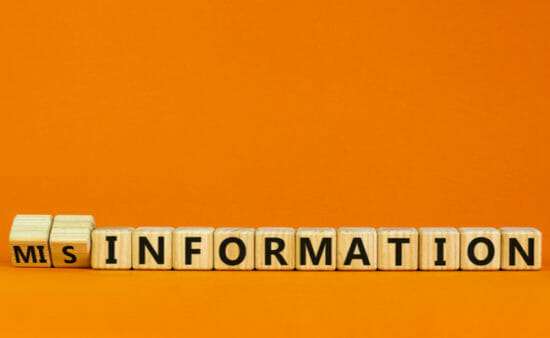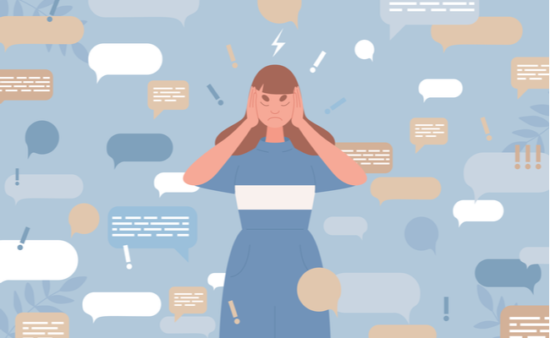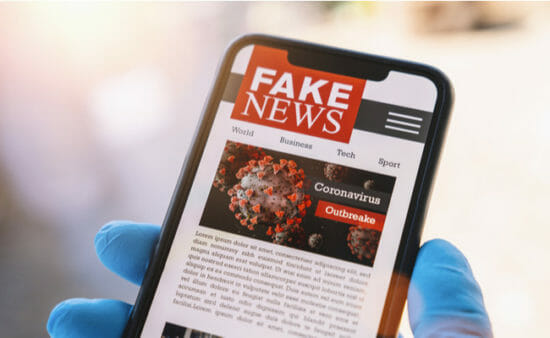Disinformation vs. Misinformation – Knowing the Difference
In the age of the internet, disinformation and misinformation are rampant. Both are a certain type of false information and can be dangerous in crucial times such as natural or man-made disasters, election periods, or a worldwide pandemic. Now that the internet is practically free anywhere, anyone can be vulnerable to disinformation or misinformation, otherwise known as fake news.
While scrolling social media, you might stumble upon an article or a photo that you believe, at first glance, is true. You, later on, discover that the information was false or outdated.
Was it disinformation or misinformation? The two are closely related but not the same. Read one below to know the distinction between these two terms.
Differences Between Disinformation vs. Misinformation

Misleading information can either be deliberately or mistakenly given. False info on media outlets like the news should make you wary because it questions the integrity of the journalists, broadcasters, and the network itself. It is easier to spread fake news on social media because a lot of them go unchecked. While some platforms like Facebook have put some measures to help curb false information, it is still running rampant.
False information or fake news can come in many forms. They can be malicious articles, manipulated data, spliced videos, edited photos, or even simple typographical errors. Once they have been disseminated to the public, the need to rectify them relies on the audience.
To do that, they can first identify if this false info was with harmful intent or simply a human mistake. The two common types of false information are below.
Definition of Disinformation
Disinformation is a type of misinformation with the intent to deceive or harm. It has been around for a very long time, even before the age of smartphones and the internet. It is often the type of false information that malicious intent capitalizes on, whether financially or politically. These typically include deliberate twisting of narratives, editing photos, or misquoting.
Definition of Misinformation
Misinformation is false information or one that is inaccurate. It could be by mistake or done deliberately and often spread widely among others. Sometimes misinformation can come in the form of misprints, mistranslations, or misconceptions. Misinformation can turn into disinformation if the audience knows that it is false yet continue to spread it around.
Examples of Disinformation vs. Misinformation
Figuring out which is between disinformation vs. misinformation can be tricky. To the untrained eye, false information can even be hard to pinpoint at first glance. You will admittedly need basic information about the subject and, even more, the ability to criticize the information presented.
Verifying the information using reliable and data-driven sources is the most effective way to ensure you do not fall victim to fake news. Below are some examples.
Examples of Disinformation
One of the best times to observe disinformation is during an election period. No matter where you are in the world, the process of electing the next leaders can get ugly. Some candidates may encourage their supporters to continue spreading disinformation campaigns or start themselves to edge out the competition.
These are also common as propaganda. For example, the Russian interference during the 2016 US Elections deliberately spread malicious stories about a certain candidate. Unsubstantiated rumors, gossip, claims, or conspiracies are also disinformation.
Examples of Misinformation
During the COVID-19 pandemic, misinformation ran rampant. This usually happens when a disaster strikes, people are panicked, and authorities are not able to handle communications properly. When the pandemic began, there was much misinformation online. Some posted edited videos of getting rid of the virus using a hairdryer.
Another popular conspiracy theory is that the latest development in technology, 5G cellular networks, cause a myriad of diseases like cancer, infertility, and even COVID-19. The idea of this conspiracy is that the radio waves of the 5G networks can penetrate through the skin, damage the brain, and cause harmful health issues. This has been long-debunked by scientists and doctors, of course, but it still resurfaces every few years with a new disease outbreak.
How Do You Recognize Disinformation or Misinformation?
A few things might help you recognize disinformation or misinformation apart from general knowledge, critical thinking, and intuition. Some of these can be easily spotted if you know how to validate your sources. For example, if the information presented seems too good to be true, if it implicitly sides with your personal biases, if the stats and data appear to be outdated or made up without a proper source, it is most likely fake news.
On social media platforms, anonymous accounts or accounts that have just popped out and use fake names and fake profile pictures while spreading false information are called trolls. This originated from the phrase “trolling the internet” or going around and preying on other online users using fake news or propaganda. Do your best to stay away from trolls and do not engage with them.
What can you do to avoid fake news?
While doing a quick Google search to verify the information that has been is good, going the extra mile wouldn’t hurt either. After all, not everything you find in a search engine could be true or trustworthy. Sometimes, the top articles are just clicks and views and not because they are the most reliable source. Remember that old saying, not everything on the internet is true.
The best baseline way to dissect a piece of information is to check all the basics — the author, the data in any, the date it was published, the organization it is associated with, and if the information is comparable to other sources. Always try to figure out where the information is coming from and whether or not the source is credible.
Related Articles
The Bottom Line
Verifying any and all information that you come across before sharing it to your newsfeed or timeline just might save someone’s life. For example, only sharing verified, scientifically, and medically proven information about the COVID-19 virus might save someone from putting a hairdryer up their throat and nose.
As a frequent user of social media platforms, you have the responsibility to own up to everything you post. With so many editing apps and the increasingly rampant deep fake technology, it is easy to fall victim to disinformation or misinformation. Do your due diligence. If you believe and share fake news, you might be compromising your integrity and credibility as a person, so it is always best to be careful and verify everything first.



